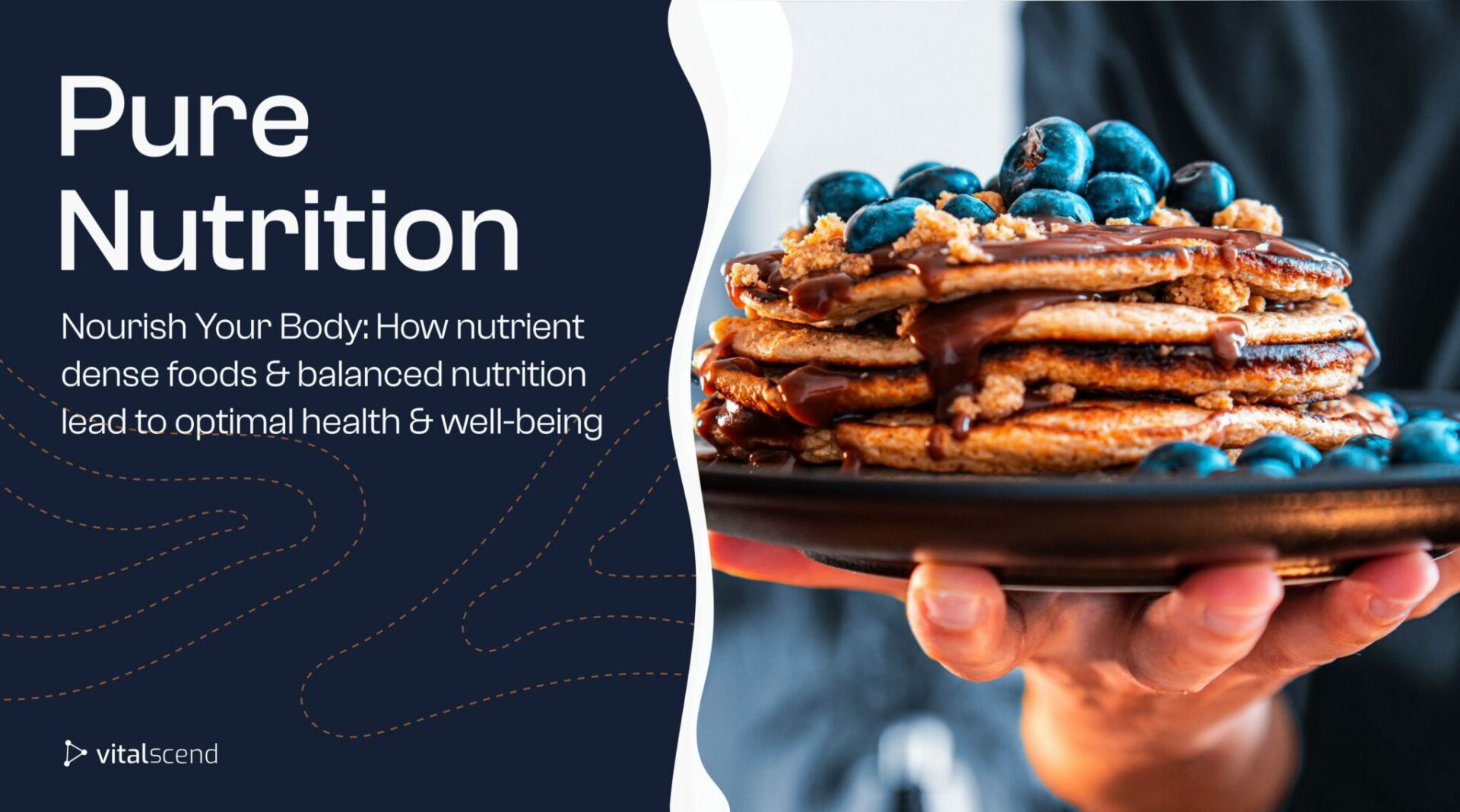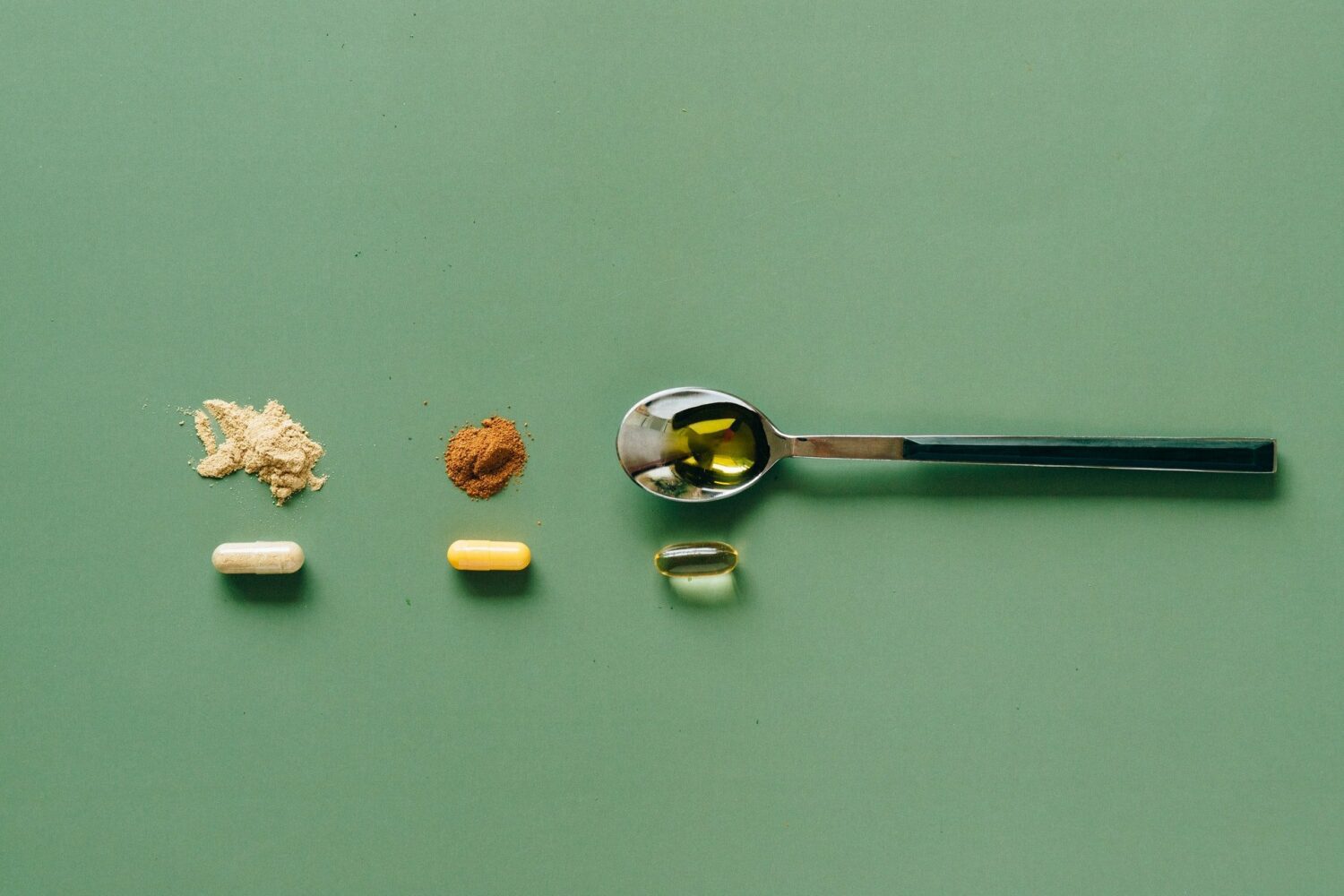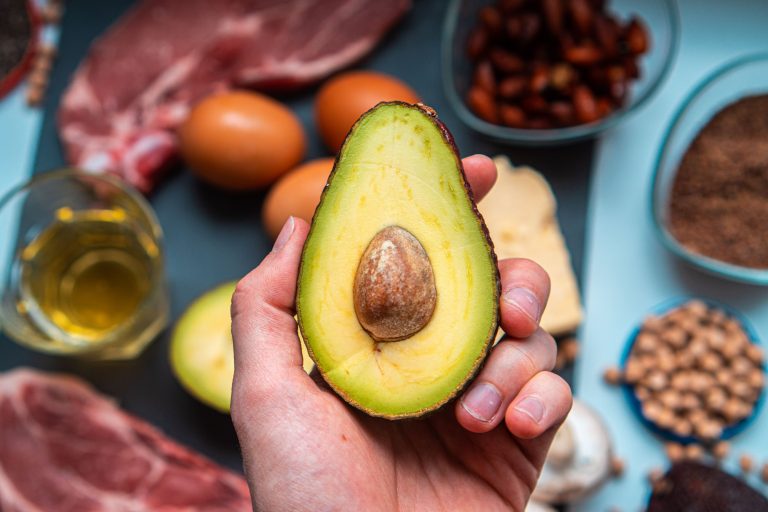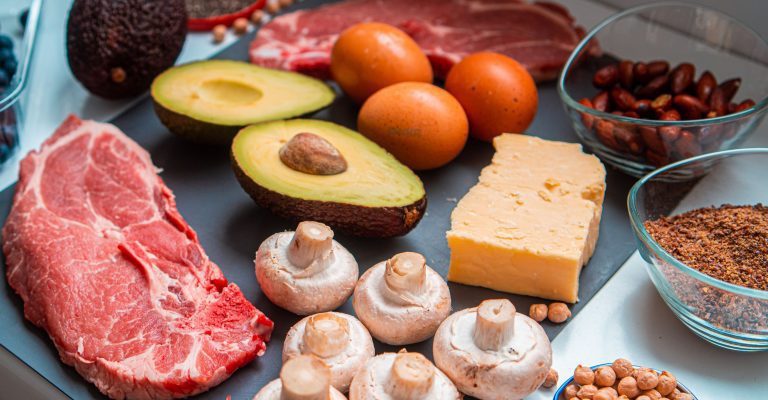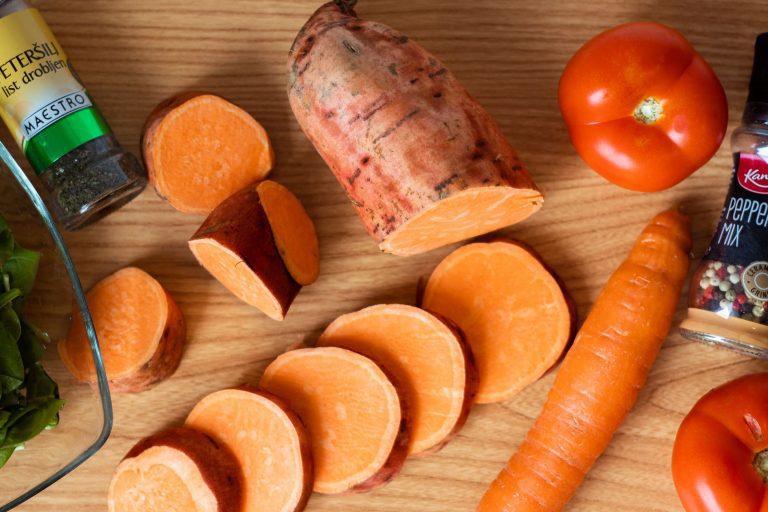The Fundamentals of Healthy Nutrition: Nourish Your Body
Why is Nutrition Important
Healthy Nutrition is essential for sustaining the vital physiological functions of our body, as well as maintaining overall health and well-being. It’s the fuel the body needs to produce energy to carry out daily activities and functions. Today we’ll do a full overview of the pieces that make up a healthy diet.
Nourishment is about ingesting nutrients through food consumption, essential for the growth, development, and repair of the body. Food is essential for survival, as it supports the sustenance of the body in many ways.
There are 3 specific macronutrients in food which are carbohydrates, proteins, and fats. Each one is important for proper function and health. Micronutrients include vitamins and minerals which support our bones, brain, muscles, organs, etc.
Most Common Unhealthy Eating Habits
To get straight to the point, there are many suboptimal and potentially detrimental nutrition choices people make that start this debate on what is a healthy diet. The three key ones worth focusing on, that would give the highest benefit in return if taken care of are:
Overeating
Trans Fats
Refined Sugars
Overeating – ingesting more calories than expanding leads to weight gain which develops forth numerous health issues like diabetes, obesity, and high blood pressure. Besides stress, people overeat due to low energy, so more food would give us a boost. But the opposite happens, we run into metabolic deficits making our body inefficient in energy production. That’s where a caloric deficit or fasting can reset our energy.
Trans Fats – found in processed foods like frozen pastry, coffee creamers, margarine, cookies, french fries, and doughnuts. Trans fats are created through an industrial process of shortening and adding hydrogen. They’re detrimental to heart health, increase CVD risk, and raise LDL levels and inflammation in the body. Switching to healthy fats like avocado, walnuts, olive oil, and salmon, is the way to go. (1)
Simple Sugars – (frequent) ingestion of too many white carbohydrates and sugars causes high glucose variability, characterized by spikes and drops of blood glucose. This is detrimental to metabolic health, leading to numerous issues associated with insulin resistance. (2) (3) Greater alternatives are complex carbs like quinoa, brown rice, and lentils. For pasta, pizza, and dough lovers, whole-wheat or whole-grain versions do the trick.

Types of Diets
A diet means a way of life. It takes into account activity, cooking, socialization, stress management, etc. In today’s world, it mostly means a number of calories, % of macronutrients, or a specific set of foods. But nutrition has some depth in it, so context is important, it’s not all numbers.
Here are some of the most common diets:
- Low Carb, High Fat (LCHF) Diet: This diet emphasizes high fat intake while restricting carbohydrates. It is thought to enhance general health, blood sugar regulation, and weight loss. LCHF can improve metabolic health, leading to greater energy and vitality.
- Vegetarian / Pescatarian: Vegetarians forgo meat consumption but may consume dairy and eggs as well as other animal products. It can be healthy if well-planned to guarantee appropriate protein and nutrient consumption. Pescatarians eat fish and seafood instead of meat, all else is similar.
- Mediterranean: This diet emphasizes entire food groups such as fruits, vegetables, whole grains, fish, and healthy fats. It is based on the typical eating habits of people in the Mediterranean region, who are known to live longer. It is linked to a decreased risk of heart disease and other chronic illnesses.
- Paleo: The paleo diet prioritizes foods eaten by our ancestors, such as lean meats, fish, fruits, vegetables, nuts, and seeds. Dairy, cereals, and processed foods are excluded. It is believed to encourage better digestion, reduce inflammation, and assist weight loss.
- Keto (Ketogenic): The goal of this high-fat, low-carb diet is to encourage ketosis, a metabolic state in which the body burns fat for energy instead of carbs. It works great as a reset diet, rather than a long-term one. Keto can reset insulin levels, leading to increased energy and better metabolic health.
- Vegan: A vegan diet avoids all animal products, including meat, eggs, and dairy. Healthy vegans tend to have superior cardiometabolic markers, lower inflammation, and oxidative damage. For proper brain, muscle, and bone development, it’s crucial to properly supplement bioavailable protein, vitamin B 12, and iron.
- Carnivore: This diet excludes plant-based foods and is entirely based on animal items, such as meat, fish, and eggs. Mostly, carnivores would eat red stakes, chicken, animal fat, and bone broth. Due to worries about nutrient deficits, notably fiber, it is debatable and not often advised.
What are the different types of diets?
There are numerous diets out there. Some of the most popular include Paleo, Mediterranean, Keto, Vegetarian, Vegan, Carnivore, Pescetarian, and Atkins diet.
How to eat healthy?
The topic of nutrition is quite complex, but some of the well-known habits to make a diet healthier include: eating more fiber (whole grains, nuts, leafy greens, seeds), drinking more water (8+ glasses daily), increasing the intake of vitamins and minerals (vegetables, fruits) and eating more protein (lean meat, fish, seafood, nuts) while excluding any processed or deep-fried foods and refined sugars.
What is the healthiest diet?
The Mediterranean diet has the highest overall score, partially due to its versatility. It’s not as restrictive as the keto, vegan, or paleo diet so it works better for the broad population. Meditteraneans mainly focus on vegetables, fruits, and whole grains. Fish and seafood are the main meaty options while having some chicken and very rarely, red meat. They enjoy nuts, dark chocolate, cocoa, and wine often, and eat with their families, in a social setting.
Healthy Nutrition | What makes a healthy diet?
What makes a healthy diet is a complex question, where context and individualization are of the essence, hence why we have nutrition specialists. Aside from healthy caloric range and nutrient-dense foods, many nutritionists could agree upon these 4 key elements. being a part of a healthy diet:
Fiber
Protein
Vegetables
Water
Fiber: an essential nutrient that supports digestion and reduces the risk of heart disease, neurodegeneration, or diabetes. Eating high-fiber foods like veggies, both starchy and leafy, fruits, nuts, whole grains, and seeds.
Protein: the key nutrient for muscle growth which supports anything related to development and anabolism, such as immunity, regeneration, muscle growth, and bone strength. Protein boosts metabolism which aids in fat loss as well. Lean meats, poultry, fish, beans, lentils, tofu, and low-fat dairy foods are all great sources of protein.
Vegetables: eat your veggies stuck since childhood, huh? There’s a reason for it. A great source of fiber, vitamins, and minerals which promote bones, brain, and digestive health. Include green leafy ones, starchy and cruciferous vegetables.
Water: running low on water (dehydration) impairs physiological function. Water is essential to maintaining proper hydration levels which supports circulation and helps control temperature. Besides more veggies and fruits, drink 8-10 glasses of water a day, and drink some more after a workout.
5 Reasons Mediterranean Diet Is Considered “The Healthiest”
As so many new diets arise on the market, it is hard to know which one…
The Healthiest Diet In the World
The Mediterranean diet has earned the badge for the healthiest diet overall. But is there such a thing? No. The point is, the Mediterranean diet is the least restrictive, and most suitable for the average population.
Compare it to keto, carnivore, or vegan, such diets really need to be tailored to one’s needs and responses, as we’re cutting out full food groups or a macronutrient.
The Mediterranean style of eating focuses on vegetables, fruits, and whole grains as its staples, while adding some fish, seafood, and nuts for protein. Dark chocolate and red wine also make the list, as socialization and enjoyment go a long way in promoting longevity.
Here are the 5 reasons the Mediterranean diet is considered to be “the healthiest”:
Antioxidants
Low Sugar
No Processed Meat
No Deep Fried
Moderation
High in antioxidants – besides the veggies, MD incorporates drinks like cocoa and coffee, as well as spices like turmeric, parsley, and cinnamon. Each contains potent antioxidants which help fight oxidative damage, exerting anti-aging effects.
Low in refined and simple sugars – yes, pizza makes the list. However, MD swaps refined carbs with whole grains, adding some barley, quinoa, and whole wheat pasta in the mix. This controls glucose variability, which reduces insulin resistance and diabetes-related issues.
Excludes red processed meat – red meat is a very rare occurrence in MD, 1-2 monthly. While grass-fed can be healthy and packed with nutrients, practically, most people still would enjoy bacon, salami, and hot dogs. Mediteraneans swap red meat for seafood like fish, crabs, oysters, or sardines.
Excludes (deep) fried foods – this puts our bodies in a healthier state right away, as inflammation and OS damage are greatly reduced. Oxidation is aging, and aging is reduced ability to regenerate. That’s why MD is considered anti-aging.
Moderate intake of high-quality alcohol – a glass or two of homemade red wine rich in Resveratrol is one of the common ways Mediterranean lunch ends.
Pro Tip
Part of the reasons Mediterraneans are generally healthier isn’t just the food. It’s the way they cook and prepare it, the way they socialize and eat with their families, as well as the low-intensity daily activity they have.
Individualization and Nutrigenomics
The question of what constitutes a healthy diet is intricate and requires consideration of context and individual needs, which is why nutritionists are necessary. Since people react differently to various diets, there is no single “best” diet.
The link between genetics and nutrition is the main area of focus for nutrigenomics. The field of nutrigenomics investigates how genes are impacted by our genetic makeup and how nutrition influences gene expression. (4)
The science of nutrigenomics examines how diets, macronutrients, and micronutrients affect human genes. Our well-being can be significantly impacted by differences in gene copies, expressions, or mutations.
A genetic vulnerability like lactose intolerance, sugar sensitivity, or susceptibility to celiac disease can be identified with the aid of nutrigenomics. Along with the advice of a specialist, this knowledge can help us make smart nutritional decisions.
Nutrigenomics – The relationship of Genes and Nutrition for Better Health
The relationship between genes and nutrition is the primary focus of nutrigenomics. Many people view food just…
Nutrient-Dense Foods
One of the best ways to eat healthy is to incorporate more nutrient-dense foods. These are foods that per the number of calories (or volume) provide an excellent source of vitamins, minerals, antioxidants, or fiber.
Foods with solid nutritional profiles include green leafy veggies, nuts, avocados, seafood, grass-fed meat, berries, etc. Healthy eating is just about that, providing enough nutrients to nourish the body, opposite to eating foods considered to be “empty calories”. Here’s a list of our favorite nutrient-dense foods:
- Blueberries: High in antioxidants, especially anthocyanins, which give blueberries their vibrant purple color. Being low in calories, blueberries are a great source of fiber, vitamin C, vitamin K, and manganese, as well.
- Avocado: The fruit is loaded with heart-healthy monounsaturated fats (omega 3). Moreover, fiber, potassium, vitamin K, vitamin C, and vitamin E are all abundant.
- Walnuts: Another great source of omega-3 fats, crucial for brain function. They also provide quality protein, fiber, vitamin E, and minerals such as magnesium and phosphorus that support muscle function and bone health.
- Grass-fed beef: one of the favorite foods many biohackers praise, alongside liver. Why? Pretty rich in nutrients like iron, zinc, and choline, important for brain and muscle function. It’s also omega 3 powered, rich in CLA and other great fats.
- Spinach: High in minerals including vitamins A, C, and K, folate, iron, and calcium, spinach has a low-calorie count. Moreover, it has antioxidants like lutein and zeaxanthin, which are critical for maintaining eye health.
- Salmon: is a heart-healthy seafood high in omega-3 fatty acids. In addition, protein, vitamin D, and vitamin B12 are all present in salmon. Wild-caught salmon is preferred, as it is more abundant in antioxidants.
- Almonds: Almonds are an excellent source of fiber, protein, vitamin E, and magnesium. They’re also loaded with beneficial monounsaturated and polyunsaturated fats which assist brain function.
- Artichoke: An antioxidant-rich vegetable with a low-calorie count, artichokes are rich in fiber, vitamin C, folate, and phytochemicals like chlorogenic acid and cynarin. Moreover, it includes prebiotic fibers that support digestive health.
What are nutrient-dense foods?
Nutrient-dense foods are foods that pack a lot of nutrients like fiber, vitamins, minerals, or antioxidants relative to their caloric content (or volume). So foods like avocados, walnuts, or salmon which are packed with nutrients are one example, leafy greens, fibrous fruits, and fatty seeds are another.
Can Keto diet help with weight loss?
Yes, the keto or LCHF diet can enhance fat loss as it facilitates a shift in metabolism, allowing the body to burn fat for fuel. At first, most of the superior weight loss that occurs is due to water loss. But as we progress, insulin levels can reset aiding in better glycemic control which improves metabolic health. This can have a positive net effect on weight loss. It’s important to note that keto is more of a reset diet, than a long-term one.
What foods are rich in antioxidants?
The richest antioxidant bombs are probably spices and herbs like Clove, Thyme, Cinnamon, Oregano, Chilli, Turmeric, cilantro, and similar alternatives. In terms of foods, berries, green leafy vegetables, nuts, and seafood dominate the scene.
Antioxidant-Rich Foods
Combatting oxidative stress is the route to longevity, as oxidation means aging. Eating antioxidant-rich foods keeps a steady influx of antioxidants, raising your antioxidative status.
- Turmeric: Curcumin, a potent antioxidant found in turmeric, can help reduce inflammation and offer protection from chronic illnesses like heart disease or neurodegeneration.
- Berries: Blueberries, strawberries, raspberries, and blackberries are all high in anthocyanins, which are antioxidants that can assist in fighting disease, reduce inflammation, and enhance heart health.
- Dark chocolate: 70% + cocoa-powered chocolate contains a lot of flavanols, which are antioxidants that can enhance blood flow, reduce blood pressure, and stave off heart disease.
- Pecans: These nuts are rich in anti-inflammatory antioxidants including vitamin E and ellagic acid that can help fight disease and oxidative stress.
- Coffee: Coffee is a rich source of antioxidants, including chlorogenic acid, which can help reduce inflammation and protect against type 2 diabetes and liver disease.
- Peppermint: This herb contains antioxidants such as rosmarinic acid, which can help reduce inflammation and improve digestive health.
- Garlic: Garlic contains antioxidants such as allicin, which can help reduce inflammation and protect against cancer and heart disease.
- Beetroot: These root vegetables contain antioxidants called betalains, which can help reduce inflammation. Athletes love beet juice as it increases NO levels, stimulating blood flow and enhancing muscle recovery.
Top 11 Foods Rich in Antioxidants: Spices, Berries, Coffee, and Greens
Antioxidants are healthy for you, we’ve all heard that (Peter, eat your greens!). Instead of discovering…
Keto or LCHF Diet as a Reset
Low-carb High-fat diets like LCHF or Keto work by depriving the body of sugar. We enter a state of ketosis which burns fat for fuel. This doesn’t just lead to weight loss, but a reset in energy levels. (5)
By reducing glucose variability we can reset insulin levels, potentially enhancing its sensitivity. Keto may improve metabolic health by boosting mitochondria function, so we can create energy more efficiently on a cellular level. (5)
Potential benefits of LCHF or Ketogenic diets:
- Weight Loss: burns fat for fuel more efficiently, improves metabolic markers (6)
- Satiety: can reduce hunger and cravings, as we suppress hunger hormones (7)
- Insulin Sensitivity: reducing glucose spikes helps to reset insulin levels and improve its function (8)
- Energy Maintenance: the energy on keto is cleaner, less intense, and more sustainable. It improves mitochondria function, enhancing fat metabolism. (9)
- Brain Performance: helps clear out plaque, and may improve mental clarity and alertness by reducing excess glutamate (10) (11)
- Neuroprotection: fewer carbs means less oxidative stress and DNA damage, protecting the brain while slowing down cognitive decline. (12) (13)
- Anti-Inflammatory: excluding refined carbs while incorporating more healthy fats like omega-3 has potent anti-inflammatory effects (14)
- Cholesterol: provided one eats healthy fats, HDL can increase while LDL and TGL levels are reduced, thus improving cholesterol profile. (15)
Conclusion
It’s important to note that LCHF is less restrictive and risky while promoting similar effects on our metabolism. The keto is more beneficial as a reset diet, use intermittently, rather than a long-term diet.
How Low Carb High Fat (LCHF) Diet Affects Your Metabolism and Weight
Low Carb High Fat or LCHF diets are gaining popularity. From fat loss, energy boost, neuroprotection,…
10 Elements 90% Nutritious Diet
One practical approach to healthy eating is the 10 Elements 90% Nutritious diet, made by us, vitalscend.
The 10 Elements 90% Nutritious diet involves selecting ten fundamental food families that make up the majority of your diet. These are nutrient-rich foods or their alternatives.
This is not a conventional diet, but instead, it is a pragmatic approach to achieving a healthy and sustainable eating plan. It is not overly concerned with macronutrient ratios or calorie deficits. The goal is to simply pick wholesome, nutrient-dense foods that constitute the bulk of our diet.
The diet is easy to implement, as it simplifies grocery shopping with no need for complex meal planning or recipes. You always buy your 10 healthy staples to start with. It is based on the assumption that individuals possess a basic understanding of which foods are healthier and more nutritious.
One example of the 10 foods (families) list includes avocado, chicken, rice, eggs, broccoli, berries, dark chocolate, nuts, salmon, and whole wheat pasta. Not just these foods, but their alternatives as well. What’s great is you can always switch them to find what works for you.
10 Elements Diet – Build The Foundation of a 90% Nutritious Diet
10 Elements Diet The 10 elements diet is created around the idea that if we choose 10…
Bullet Points
- Nutrition provides energy that supports all vital functions of the body. Through eating, we ingest calories and nutrients essential for growth, development, and regeneration.
- The three most common detrimental nutritional habits leading to health issues are overeating, eating trans fats, or high consumption of refined sugars and carbohydrates. These lead to increased inflammation, weight gain, and deteriorate metabolic health.
- Four key steps to a healthy diet most nutritionists agree upon are: eating more fiber, drinking more water, increasing protein intake, and eating more vegetables.
- The most popular types of diets include the Mediterranean, Paleo, Keto, LCHF, Vegan, Vegetarian, Atkins, and Carnivore Diet.
- The Mediterranean diet is considered to be the healthiest for the general population, as it’s less restrictive and more versatile. It mainly includes vegetables, whole grains, fruits, seafood, and nuts while limiting refined sugars, saturated and trans fats.
- Nutrigenomics studies the relationship between genes and nutrition. Each individual is unique, so it’s optimal to tailor the nutrition to one’s needs to fully optimize one’s diet.
- Nutrient-dense foods are foods loaded in nutrients like vitamins, minerals, and antioxidants relative to their volume (or calories). Such include avocados, blueberries, walnuts, liver, spinach, eggs, artichoke, etc.
- Antioxidants fight oxidative stress which acts anti-inflammatory, reduces DNA damage, and exerts anti-aging effects. Spices and herbs like cinnamon, basil, cilantro, chili, and thyme are the highest sources of antioxidants.
- 10 Elements 90% Nutritious Diet is a pragmatic approach to healthy eating. Done by outlining your 10 healthy staple foods that would make up the bulk of your diet. It’s a practical solution based on the assumption that individuals know what’s generally healthier.

